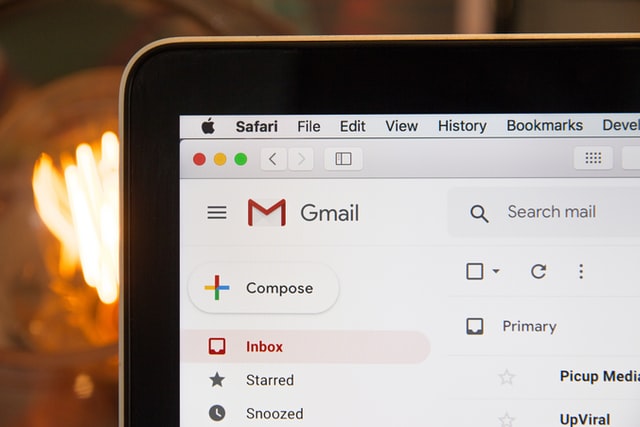Email list growth rate measures how fast your email subscriber list is expanding, accounting for new signups, unsubscribes, and bounces. A healthy growth rate is key to sustaining audience engagement, driving conversions, and maintaining marketing momentum in the long term.
Your email list is more than a line on a dashboard — it’s your owned audience. Unlike followers on social media platforms you don’t control, your list is yours. But a stagnant or declining list is like a leaky bucket: even great content can’t save it.
Let’s talk about email list growth rate — not in real-world terms: why it matters, how to measure it meaningfully, what to do when it’s flatlining, and how smart creators and marketers are turning it into a growth engine.
Key Takeaways
- Email list growth rate = (New Subs – Unsubs – Bounces) ÷ Total Subs × 100.
- Quality and retention matter just as much.
- You need to grow your list by at least 25–30% yearly to offset natural list decay.
- The best growth strategies combine lead magnets, compelling copy, and well-placed signup forms.
- Use trusted tools like Google Forms, Typeform, or ESP integrations to track conversions accurately.
- Don’t forget to test, segment, and ask for feedback — people grow lists, not forms.
- Advanced growth tactics like referral loops, content upgrades, and viral giveaways can double or triple growth — if done right.
What Is Email List Growth Rate?
Email list growth rate tells you how fast your list is growing — or shrinking. It’s not just about how many people join. It’s about how many stick around.
List growth rate formula:
[(New Subscribers – Unsubscribes – Bounces) ÷ Total Subscribers] x 100
So, if you gain 500 subscribers, lose 100 (through unsubscribes or invalid emails), and you had 10,000 to begin with:
→ Your growth rate = 4%.
However, you’d be surprised — the number means nothing without context. A 4% growth rate might be incredible in a high-churn niche or disappointing if you’ve just run a viral giveaway. Numbers matter. But so does why.
Average Email List Growth Rate
So, what’s a good email list growth rate? Industry research shows that most healthy lists grow between 2% and 5% per month, or roughly 25–35% annually.
But context matters:
- Small businesses and creators often see slower but steadier organic growth (1–3% monthly).
- E-commerce and lead-gen brands running paid campaigns can achieve 5–10% monthly spikes — though retention usually evens it out.
- Stagnation or negative growth means your churn (unsubscribes + inactivity) is outpacing new signups — time to refresh your lead magnets and messaging.
Pro insight: Track growth and churn side by side. A 4% monthly gain looks great until you realise 3% of your list unsubscribed that same month.
Why Your Email List Growth Rate Matters
Because email is still one of the highest-converting marketing channels — and every marketer knows it.
But most email lists lose 20–30% of subscribers every year through unsubscribes, disinterest, or dead email addresses.
So if you’re not growing, you’re shrinking.
Healthy growth means:
- You’re reaching more people with your message.
- Your brand is staying top-of-mind.
- You’re increasing potential conversions without spending more on ads.
- You’re building resilience — an owned audience you can rely on, no matter what happens to your Instagram account or CPC rates.

How to Measure and Track Email List Growth Rate Effectively
Don’t just measure subscribers. Track why and when people join or leave. This tells you where the energy is (or isn’t).
Track:
- Weekly/monthly growth rate (%)
- Sign-up source (landing page, blog post, product page, popup, etc.)
- Unsubscribe reasons (many platforms let users select one)
- Churn vs. engagement — are your new subscribers actually opening?
Pro tip: Set mini-benchmarks by channel. For example:
- Blog signup forms: aim for 0.5–1% conversion rate
- Lead magnets: 5–20%
- Exit-intent popups: 2–5%
When you start tracking this way, you stop asking “Is my list growing?” and start asking “What’s driving it?”
Proven Strategies to Boost Your Email List Growth Rate
1. Lead Magnets That Solve Real Problems
Forget “Free ebook.” Say: “Download the exact email sequence we used to triple sales.”
People exchange email for value. The more specific and actionable, the better.
2. Better Signup Copy
“Subscribe to our newsletter” isn’t a call to action — it’s a shrug.
“Get one killer marketing tip every Monday at 9AM — no fluff.” Now we’re talking.
3. Use More Touchpoints
Embed signup opportunities in:
- Product pages (“Get pool cleaning tips straight to your inbox.”)
- Blog posts (relevant lead magnets)
- Quiz results
- Order confirmation pages
- Email signatures
- Live chat (“Want updates via email?”)
4. Make It a Two-Way Street
Ask new subscribers a question in your welcome email. Engagement at the beginning helps with deliverability and makes people feel like part of something.
Common Challenges and How to Overcome Them
“People aren’t signing up.”
- Is the offer compelling?
- Is the form visible on desktop and mobile?
- Are you asking at the right moment in the journey?
“People unsubscribe right after joining.”
- Are you baiting and switching with your lead magnet?
- Does your email content actually match the tone and promise of your signup?
“Too many fake or low-quality signups.”
- Add double opt-in or CAPTCHA if needed — especially for paid traffic.
Focus less on volume and more on relevance. A smaller, more engaged list beats 10,000 dead emails.

The Role of Web Creators and Marketers in Driving List Growth
Web designers: Make the form frictionless. No one wants to “fill out a form”. They want value.
Copywriters: Focus on the why — not “Join our newsletter”, but “Never miss a weekly tip that helps you sell more”.
Marketers: Treat list-building as an ongoing strategy, not a side task. Build campaigns around it. Measure impact monthly.
Founders & creators: Show up in your welcome email. A quick personal message builds trust and primes long-term loyalty.
Advanced Tactics for Scaling Growth
You’ve nailed the basics. Time to scale.
Run a Viral Giveaway (Properly)
Use tools like KingSumo or UpViral — but don’t just give away a generic iPad. Offer something hyper-relevant (e.g., a free year of your product or a 1:1 session).
Content Upgrades
If someone reads your blog post on “How to Clean Pool Filters”, offer a downloadable checklist or printable guide.
Segmentation on Signup
Let users self-select interests (“Send me DIY tips” vs. “I’m a pool installer”) so you can tailor content and reduce unsubscribes later.
Exit Intent + Scarcity
Popups that combine urgency with value can still work — e.g., “This free checklist disappears in 3 hours”.
Referral Programs
Reward subscribers for getting their friends to join — discount, exclusive content, or early access.
Email List Growth Rate Is a Pulse Check
Think of your email list growth rate as a vital sign. If it’s healthy and rising, your brand is resonating. If it’s flat or falling, something’s broken — either the offer, the message, or the delivery.
But the good news? It’s one of the most fixable problems in marketing.
One form. One lead magnet. One great CTA. One experiment away.


